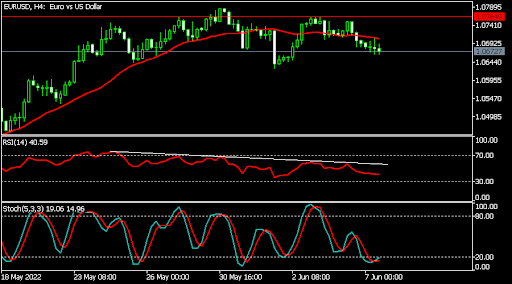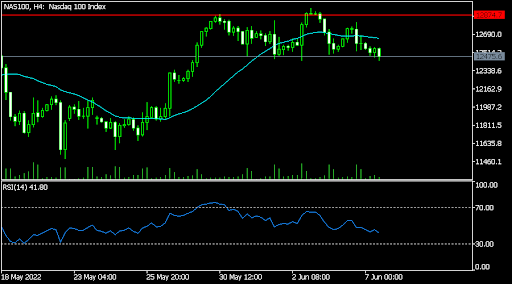The Australian dollar moved sideways on Tuesday even after the Reserve Bank of Australia (RBA) caught investors off-guard with a bigger hike than expected. The bank hiked interest rates by 50 basis points (bps) to 0.85%. This was a higher increase than the median estimate of 25-bps increase. It was also the bank’s first back-to-back rate hike since 2010 and the first time it has hiked rates by 50 bps since 2000. It now expects inflation to keep rising in the coming months and then retreat to the target range of 2% and 3% in 2023. Analysts anticipate several more rate hikes this year.
The Japanese yen crashed to the lowest level in over 20 years due to the monetary policy divergence between the Bank of Japan (BOJ) and other central banks. While the Fed, RBA, BOE, and ECB have started tightening, the BOJ is still committed to maintaining low interest rates and easy-money policies. On Monday, the bank vowed to stick with this policy in a bid to boost the economy even as inflation keeps rising. Most of these inflationary pressures are because of rising energy prices. While the weaker yen helps many Japanese exporters, smaller firms are being hit hard.
Global stocks declined sharply on Tuesday on concerns over soaring inflation and interest rates. In the United States, futures tied to the Dow Jones, S&P 500, and Nasdaq 100 indices declined by more than 1%. In Europe, key benchmarks like CAC 40, Stoxx 50, and DAX declined by almost 1%. Investors are also pricing in margin pressure from leading companies. For example, Target said that its profit will likely drop because of rising inventories. The company expects its profit to decline faster than it noted in its recent quarterly results.
USD/JPY
The USDJPY pair continued its bullish trend as the Japanese yen continued weakening. The pair rose to a high of 132.80, which was the highest level in over 20 years. As it rose, it managed to move above the important resistance at 131.37, which was the previous YTD high. It has moved above the 25-day and 50-day moving averages while the Relative Strength Index (RSI) has moved above the overbought level. The pair’s uptrend will likely continue in the coming months.
EUR/USD
The EURUSD pair declined to a low of 1.0672, which was the lowest level since June 6. On the four-hour chart, the pair remains below the important resistance level at 1.0765. It also crossed the important 25-day moving average while the RSI and Stochastic have been rising. Most importantly, it has formed what looks like a head and shoulders pattern. Therefore, the pair will likely keep falling ahead of the ECB decision.
NAS100
The Nasdaq 100 index continued its bearish trend as margin concerns continued. It fell to a low of $12,470, which was slightly below last week’s high of $12,945. On the four-hour chart, the pair moved below the 25-day and 50-day moving averages while the Relative Strength Index (RSI) has been in a downward trend. It has also formed a small head and shoulders pattern. Therefore, the index will likely continue falling as bears target the key support at $12,200.
General Risk Warning for FX & CFD Trading. FX & CFDs are leveraged products. Trading in FX & CFDs related to foreign exchange, commodities, financial indices and other underlying variables, carry a high level of risk and can result in the loss of all of your investment. As such, FX & CFDs may not be appropriate for all investors. You should not invest money that you cannot afford to lose. Before deciding to trade, you should become aware of all the risks associated with FX & CFD trading, and seek advice from an independent and suitably licensed financial advisor. Under no circumstances shall we have any liability to any person or entity for (a) any loss or damage in whole or part caused by, resulting from, or relating to any transactions related to FX or CFDs or (b) any direct, indirect, special, consequential or incidental damages whatsoever.
Recommended Content
Editors’ Picks
EUR/USD edges lower toward 1.0700 post-US PCE

EUR/USD stays under modest bearish pressure but manages to hold above 1.0700 in the American session on Friday. The US Dollar (USD) gathers strength against its rivals after the stronger-than-forecast PCE inflation data, not allowing the pair to gain traction.
GBP/USD retreats to 1.2500 on renewed USD strength

GBP/USD lost its traction and turned negative on the day near 1.2500. Following the stronger-than-expected PCE inflation readings from the US, the USD stays resilient and makes it difficult for the pair to gather recovery momentum.
Gold struggles to hold above $2,350 following US inflation

Gold turned south and declined toward $2,340, erasing a large portion of its daily gains, as the USD benefited from PCE inflation data. The benchmark 10-year US yield, however, stays in negative territory and helps XAU/USD limit its losses.
Bitcoin Weekly Forecast: BTC’s next breakout could propel it to $80,000 Premium

Bitcoin’s recent price consolidation could be nearing its end as technical indicators and on-chain metrics suggest a potential upward breakout. However, this move would not be straightforward and could punish impatient investors.
Week ahead – Hawkish risk as Fed and NFP on tap, Eurozone data eyed too

Fed meets on Wednesday as US inflation stays elevated. Will Friday’s jobs report bring relief or more angst for the markets? Eurozone flash GDP and CPI numbers in focus for the Euro.


